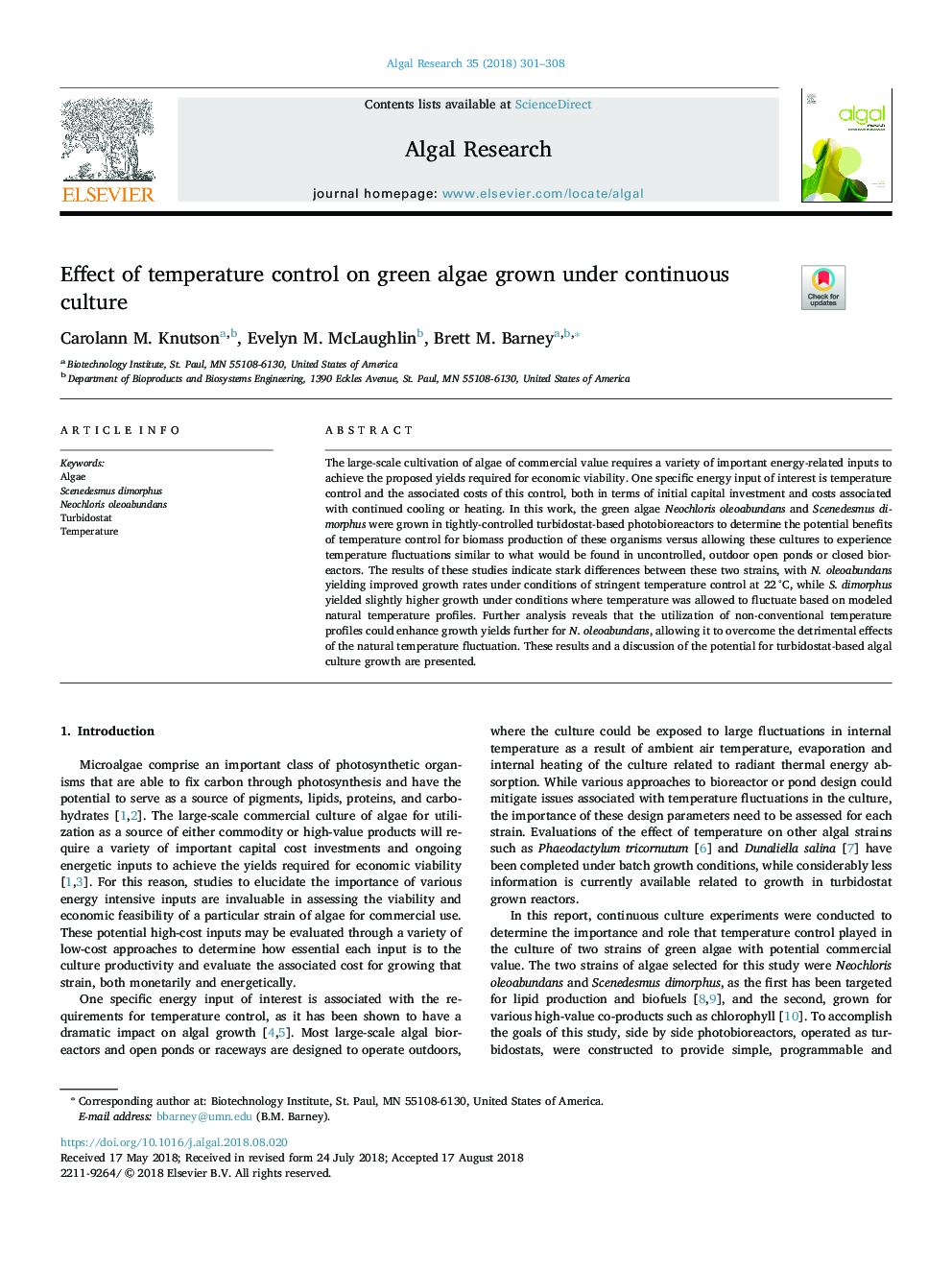| Article ID | Journal | Published Year | Pages | File Type |
|---|---|---|---|---|
| 10128911 | Algal Research | 2018 | 8 Pages |
Abstract
The large-scale cultivation of algae of commercial value requires a variety of important energy-related inputs to achieve the proposed yields required for economic viability. One specific energy input of interest is temperature control and the associated costs of this control, both in terms of initial capital investment and costs associated with continued cooling or heating. In this work, the green algae Neochloris oleoabundans and Scenedesmus dimorphus were grown in tightly-controlled turbidostat-based photobioreactors to determine the potential benefits of temperature control for biomass production of these organisms versus allowing these cultures to experience temperature fluctuations similar to what would be found in uncontrolled, outdoor open ponds or closed bioreactors. The results of these studies indicate stark differences between these two strains, with N. oleoabundans yielding improved growth rates under conditions of stringent temperature control at 22â¯Â°C, while S. dimorphus yielded slightly higher growth under conditions where temperature was allowed to fluctuate based on modeled natural temperature profiles. Further analysis reveals that the utilization of non-conventional temperature profiles could enhance growth yields further for N. oleoabundans, allowing it to overcome the detrimental effects of the natural temperature fluctuation. These results and a discussion of the potential for turbidostat-based algal culture growth are presented.
Related Topics
Physical Sciences and Engineering
Energy
Renewable Energy, Sustainability and the Environment
Authors
Carolann M. Knutson, Evelyn M. McLaughlin, Brett M. Barney,
